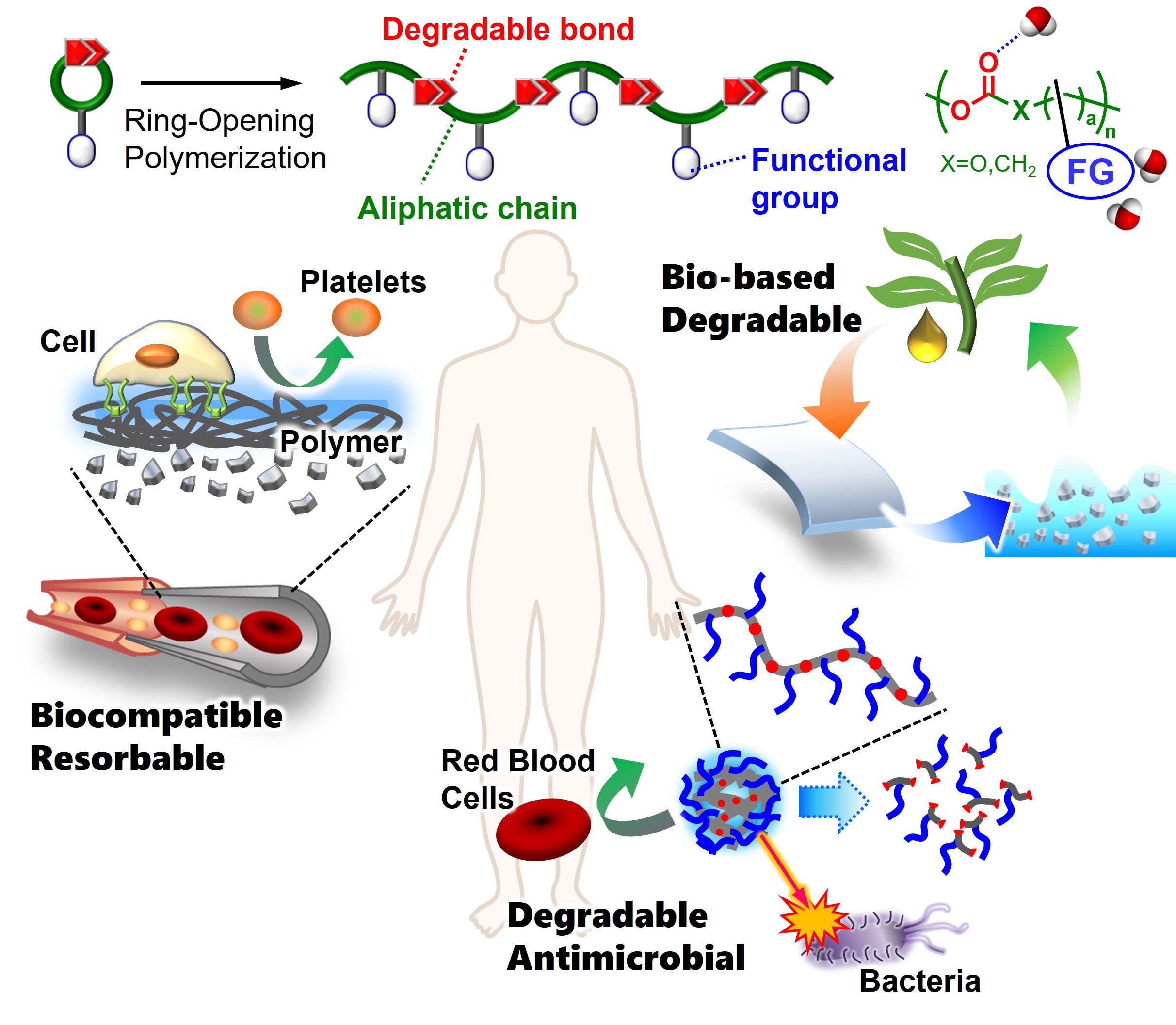Among condensation polymers such as polyesters and polycarbonates, most of aliphatic ones can be degraded by hydrolysis. These degradable polymers have been used as resorbable suture in biomedical fields and applied in food packaging and mulching films as recycling materials. Functionalized degradable polymers are now desired as a mean to respond to needs for sophisticating medical devices as well as a solution to the marine plastic waste problem and decarbonized society.
We have developed functional degradable materials exhibiting high blood compatibility and antimicrobial activity through synthesis of aliphatic polycarbonates with functional groups at the side chains. Furthermore, we explore the use of bio-based feedstock as a starting material for degradable functional polymers and recently report the successful development of a biocompatible degradable polymer derived from glycerol that is contained in many natural- and bio-molecules. As another approach, we address upcycling of poly(ethylene terephthalate) (PET) used in beverage bottles to yield high-valued functional molecules, exploiting polymer degradation chemistry.
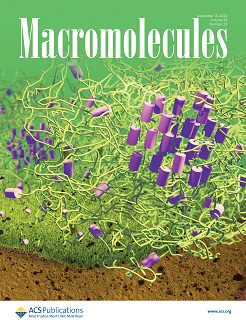
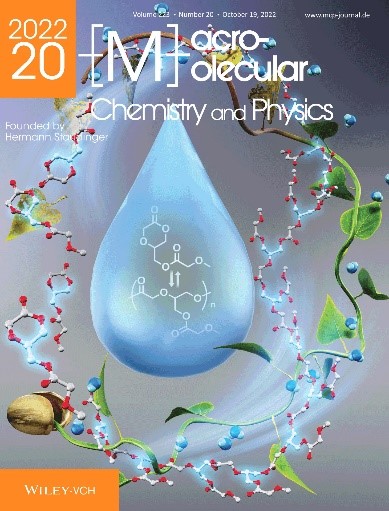
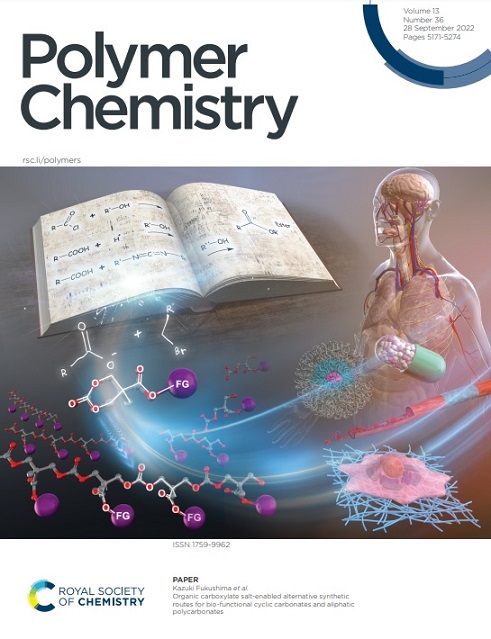
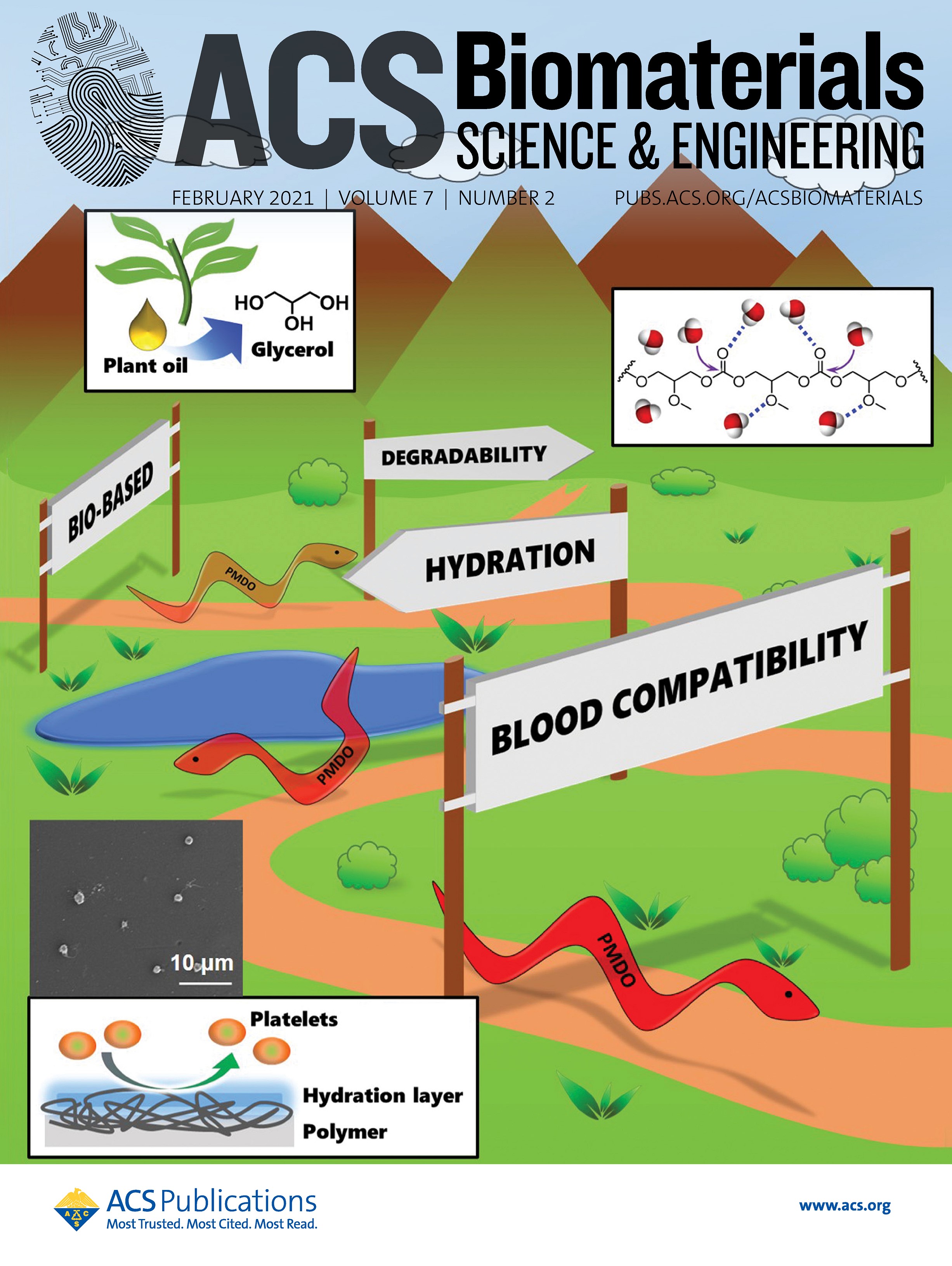
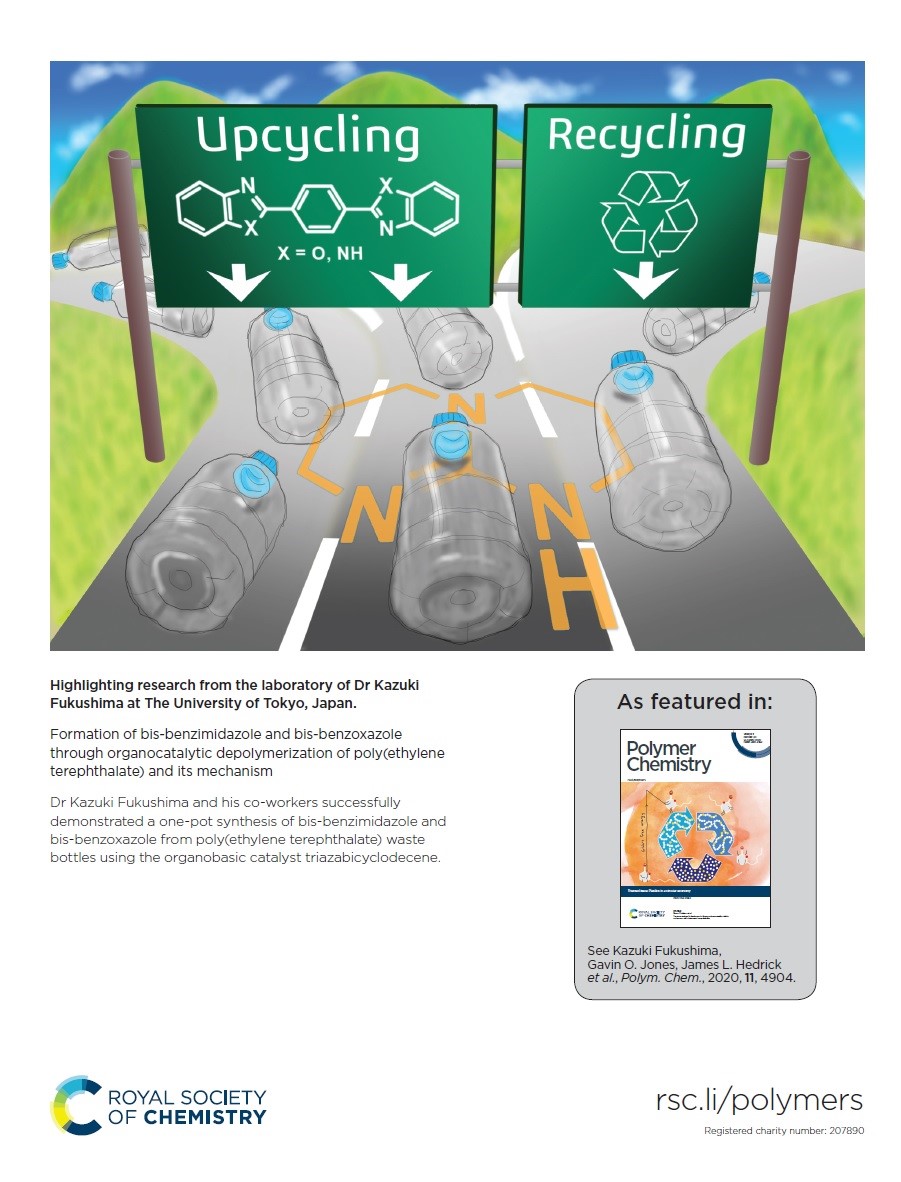
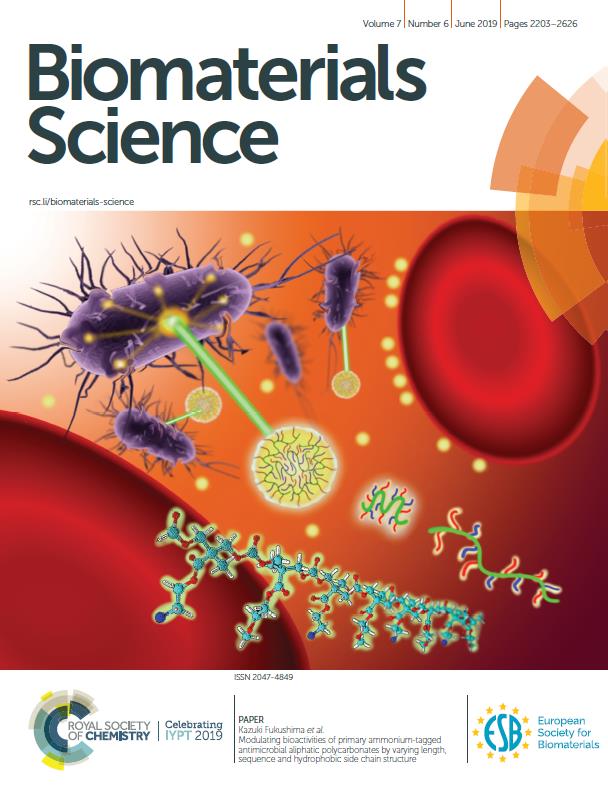
Related papers on this subject
-
Organocatalytic Depolymerization of Poly(trimethylene carbonate)
K. Fukushima, Y. Watanabe, T. Ueda, S. Nakai, and T. Kato
J. Polym. Sci., 60, 3489-3500 (2022). -
Degradable and Nanosegregated Elastomers with Multiblock Sequences of Biobased Aromatic Mesogens and Biofunctional Aliphatic Oligocarbonates
Y. Watanabe, R. Kato, K. Fukushima, and T. Kato
Macromolecules, 55, 10285-10293 (2022). -
Polydioxanone Derivative Bearing Methoxy Groups toward Bio-Functional Degradable Polymers Exhibiting Hydration-Driven Biocompatibility
K. Fukushima, Y. Ota, and T. Kato
Macromol. Chem. Phys., 223, 2200192 (2022). -
Organic Carboxylate Salt-Enabled Alternative Synthetic Routes for Bio-Functional Cyclic Carbonates and Aliphatic Polycarbonates
Y. Watanabe, S. Takaoka, Y. Haga, K. Kishi, S. Hakozaki, A. Narumi, T. Kato, M. Tanaka, and K. Fukushima
Polym. Chem., 13, 5193-5199 (2022). -
Anisotropic, Degradable Polymer Assemblies Driven by a Rigid Hydrogen-Bonding Motif That Induce Shape-Specific Cell Responses
K. Fukushima, K. Matsuzaki, M. Oji, Y. Higuchi, G. Watanabe, Y. Suzuki, M. Kikuchi, N. Fujimura, N. Shimokawa, H. Ito, T. Kato, S. Kawaguchi, and M. Tanaka
Macromolecules, 55, 15-25 (2022). -
Methoxy-Functionalized Glycerol-Based Aliphatic Polycarbonate: Organocatalytic Synthesis, Blood Compatibility, and Hydrolytic Property
V. Montagna, J. Takahashi, M.-Y. Tsai, T. Ota, N. Zivic, S. Kawaguchi, T. Kato, M. Tanaka, H. Sardon, and K. Fukushima
ACS Biomater. Sci. Eng., 7, 472-481 (2021). -
Formation of Bis-Benzoxazole and Bis-Benzimidazole through Organocatalytic Depolymerization of Poly(Ethylene Terephthalate) and Its Mechanism
K. Fukushima, G. O. Jones, H. W. Horn, J. E. Rice, T. Kato, and J. L. Hedrick
Polym. Chem., 11, 4904-4913 (2020).
References
-
Organocatalysis: A Paradigm Shift in the Synthesis of Aliphatic Polyesters and Polycarbonates
K. Fukushima and K. Nozaki
Macromolecules, 53, 5018-5022 (2020). -
Modulating Bioactivities of Primary Ammonium-Tagged Antimicrobial Aliphatic Polycarbonates by Varying Length, Sequence and Hydrophobic Side Chain Structure
K. Fukushima, K. Kishi, K. Saito, K. Takakuwa, S. Hakozaki, and S. Yano
Biomater. Sci., 7, 2288-2296 (2019). -
Monoether-Tagged Biodegradable Polycarbonate Preventing Platelet Adhesion and Demonstrating Vascular Cell Adhesion: A Promising Material for Resorbable Vascular Grafts and Stents
K. Fukushima, Y. Inoue, Y. Haga, T. Ota, K. Honda, C. Sato, and M. Tanaka
Biomacromolecules, 18, 3834-3843 (2017). -
Poly(trimethylene carbonate)-Based Polymers Engineered for Biodegradable Functional Biomaterials
K. Fukushima
Biomater. Sci., 4, 9-24 (2016).
